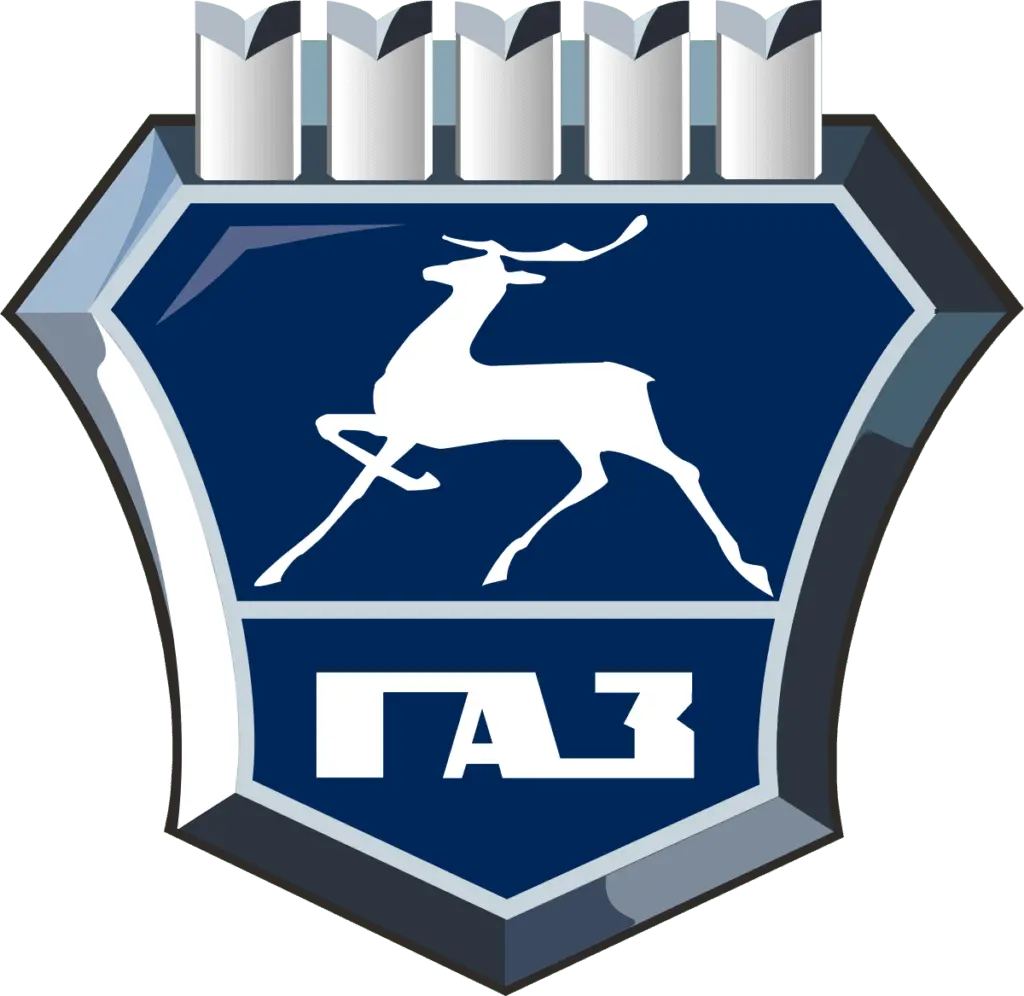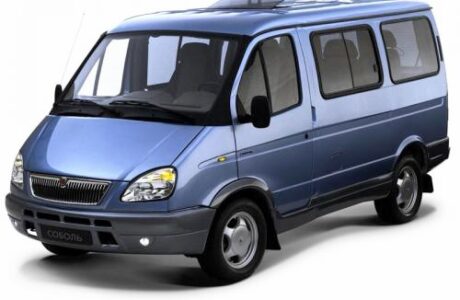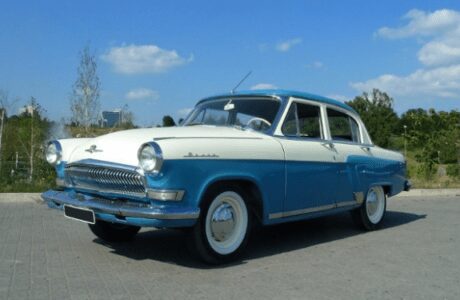
GAS

| Name: | GAS |
| Year of foundation: | 1932 |
| Founder: | VSNH |
| Belongs: | GAZ Group |
| Location: | Nizhny Novgorod |
| News: | Read more... |
Body type:
Minivan Van
The history of the automobile brand GAZ
Contents FounderEmblemHistory of GAZ cars The Gorky Automobile Plant (abbreviation GAZ) is one of the large-scale companies in the Russian automotive industry. The main specificity of the company is focused on the production of cars, trucks, minibuses, as well as the development of engines. The headquarters is located in Nizhny Novgorod. The enterprise originates from the times of the USSR. The plant was established in 1929 by a special decree of the Soviet government to improve the country's auto production. At the same time, an agreement was also concluded with the American company Ford Motor Company, which, in turn, was to equip GAZ with technical support for setting up its own production. The company provided technical support for 5 years. As a sample model for creating future cars, GAZ took samples of its foreign partner as Ford A and AA. Manufacturers have realized that despite the rapid development of the auto industry in other countries, they will need to work hard and make many important improvements. In 1932, the construction of the GAZ plant was completed. The production vector was focused mainly on the creation of trucks, and already in a secondary turn - on cars. But in a short period of time, a number of passenger cars were produced, which were used mainly by the government elite. The demand for cars was great, in a couple of years, having achieved a significant reputation as a domestic automaker, GAZ released its 100th car. During the Second World War (Great Patriotic War), the GAZ range was aimed at the production of military off-road vehicles, as well as tanks for the army. "Molotov's tank", models T-38, T-60 and T-70 were invented at the GAZ plant. At the height of the war, there was an expansion in production to the manufacture of artillery and mortars. The factories suffered significant damage during the bombing, which took quite a bit of time to restore, but a lot of labor. It also affected the temporary halt in the production of some models. After the reconstruction, all activities were aimed at resuming production. Projects for the production of Volga and Chaika were organized. As well as modernized versions of older models. In 1997, an act was concluded with Fiat to agree to the creation of a joint venture with the name Nizhegorod Motors. The main specificity of which was the assembly of passenger cars of the Fiat brands. By the end of 1999, the number of vehicles sold exceeded 125486 units. Since the beginning of the new century, there have been many projects for the application of newer technologies, and a large number of contracts have been signed with various companies in the automotive industry. The financial plan did not allow GAZ to realize all its plans, and the assembly of most cars began to be carried out at branches also located in other countries. Also, 2000 marked the company with another event: most of the shares were acquired by Basic Element, and in 2001 GAZ entered the RussPromAvto holding. And after 4 years, the name of the holding was changed to the GAZ Group, which next year buys an English van manufacturing company. In the following years, several important agreements were signed with foreign companies such as the Volkswagen Group and Daimler. This made it possible to produce cars of foreign brands, as well as to increase their demand. The founder of the Gorky Automobile Plant was founded by the government of the USSR. Emblem The emblem of GAZ is a heptagon with a silver metal frame with an inscribed deer of the same color scheme, located on a black background. At the bottom there is an inscription “GAS” with a special font. Many people are surprised why the deer is painted on the brands of GAZ cars. The answer is simple: if you study the local area of Nizhny Novgorod, where the company was revived, you can understand that a large area is forests, which are predominantly inhabited by bears and deer. It is the deer that is the symbols of the coat of arms of Nizhny Novgorod and it was he who was given a place of honor on the radiator grille of GAZ models. The emblem in the form of a deer with horns proudly raised upwards symbolizes aspiration, speed and nobility. On the initial models, there was no logo with a deer, and in wartime an oval was used with the inscription “GAS” inscribed inside, framed by a hammer and sickle. The history of GAZ cars At the beginning of 1932, the company's first car was produced - it was a GAZ-AA truck type model weighing one and a half tons. The following year, a 17-seat bus rolled off the assembly line, the frame and skin of which consisted mainly of wood, as well as a GAZ A. Model M1 with a 4-cylinder engine was a passenger model and had reliability. He was the most popular model at that moment. In the future, there were many modifications of this model, for example, the 415 pickup truck, and its carrying capacity exceeded 400 kilograms. The GAZ 64 model was produced in 1941. The off-road vehicle with an open body was an army vehicle and had special strength. The first post-war car produced was the model 51 truck, which was released in the summer of 1946 and took pride of place, having high reliability and efficiency. It was equipped with a power unit for 6 cylinders, which developed a speed of up to 70 km / h. There were also a number of improvements along with previous models and the carrying capacity of the car was increased by one and a half times. Further it was modernized in several generations. In the same month of the same year, the legendary “Victory” or the M 20 sedan model, which became famous all over the world, rolled off the assembly line. A completely new design shone with originality and was not similar to other models. The first GAZ model with a load-bearing body, as well as the world's first model with a "wingless" body. The spaciousness of the cabin, as well as the equipment with independent front wheel suspension, made it a masterpiece of the Soviet automobile industry. The passenger car model 12 “ZIM” was released in 1950 with a 6-cylinder power unit, which had strong power and was called the fastest car of the company, capable of reaching speeds of up to 125 km / h. Many technical innovations have also been introduced for maximum comfort. The new generation of the Volga replaced the Pobeda in 1956 with the GAZ 21 model. Unparalleled design, automatic transmission, an engine that reached speeds of up to 130 km / h, excellent dynamics and technical data could only be afforded by the government class. Another prototype of the Victory was the Seagull. The premium model GAZ 13 released in 1959 had similar characteristics with the GAZ 21, bringing it closer to maximum comfort and a place of honor on the pedestal of the auto industry of those times. The modernization process also went through the trucks. The GAZ 52/53/66 models deserve special attention. The models were perfectly operated due to the increased load level, which was improved by the manufacturers. The reliability of these models is still used today. In 1960, in addition to trucks, modernization reached the Volga and Chaika, and the GAZ 24 model was released with a new design and power unit and GAZ 14, respectively. And in the 80s, a new modernized generation of the Volga appeared with the name GAZ 3102 with a significantly increased power of the power unit.
No post found
No post found




Add a comment